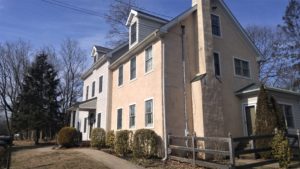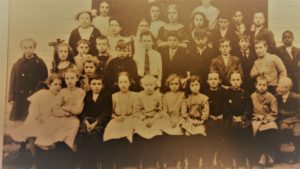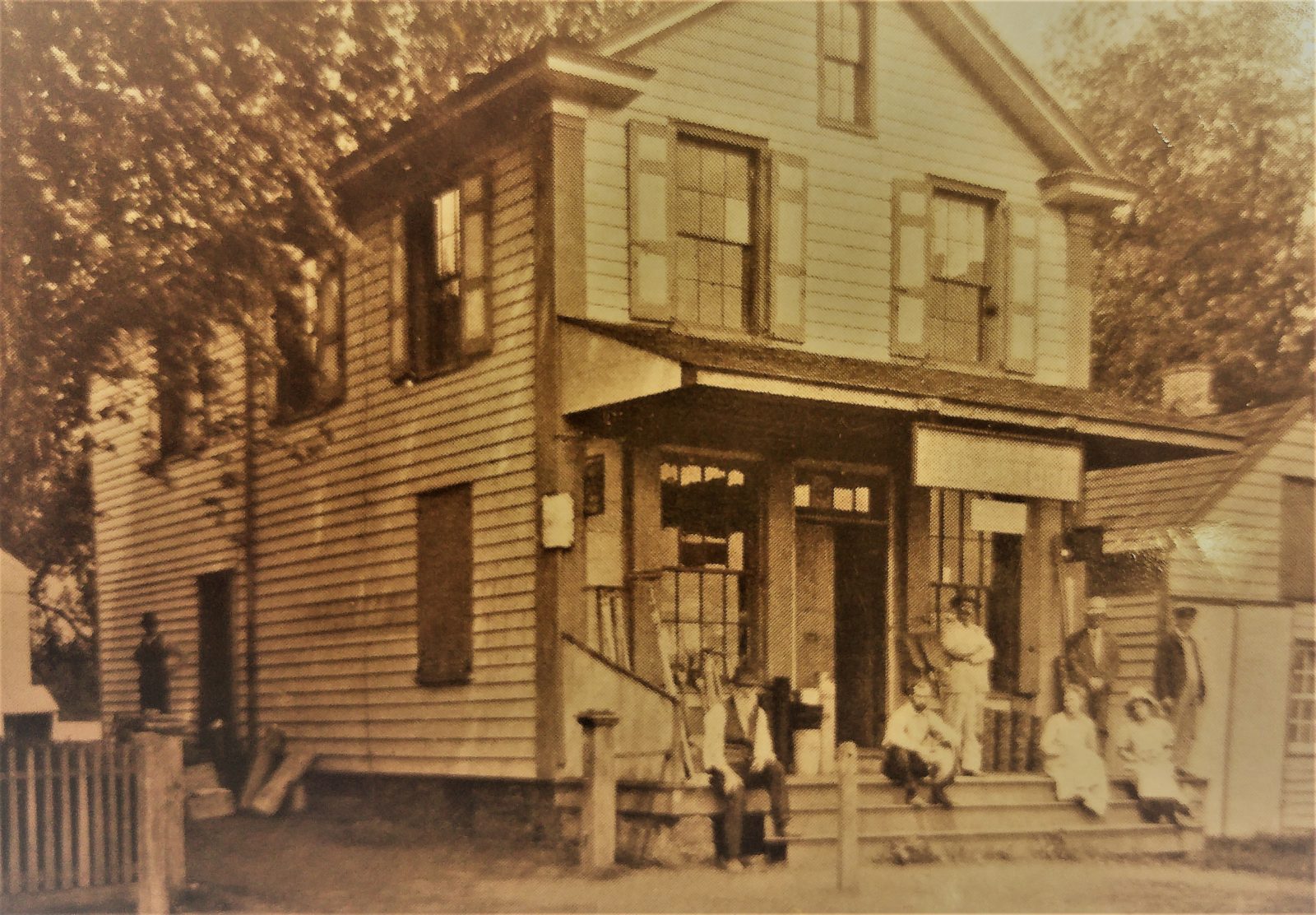Looking back on a unique farming village in 19th Century Upper Makefield.
In my mind the 1970s were the last gasp of Dolington as a quiet, rural wonder. I remember frequently driving up Lindenhurst Road to the village crossroads at Route 532 (Washington Crossing Road). Every so often I’d have to stop so Raymond Bradley could open gates and drive his cattle from a pasture on one side of Lindenhurst to his barn on the other. After clearing the road, he’d wave thanks with a big smile. The peaceful scene always reminded me of how my sister Deb, 6, and I at age 11 made some noise while herding cattle from a pine forest. With our arms flapping, we’d convoy the Guernseys across a pasture into Uncle Art’s milk barn at the foot of Washington’s snow-capped Olympic Mountains overlooking Puget Sound.
For Dolington, an explosion of suburbia all around the village the past 35 years has stolen its idyllic charm typified by Raymond and his cows. Now new housing and the hum of near constant commuter traffic interrupt what was the village’s golden age. More than two dozen well-preserved homes in its historic district built in the 19th Century are a reminder of artisans with a literary flair who once lived there.

Dolington’s origin traces to Peter Dolin who arrived in 1765 and saw the strategic importance of building a log house near the intersection of today’s Lindenhurst, Washington Crossing and Eyre roads. The dirt routes led to the county seat at Newtown and Delaware River ferry crossings at Yardley and Taylorsville (the future Washington Crossing). By 1827, Dolington had become a commercial cog centered in an incredibly fertile farming belt.
Flip ahead to 1875 and living in Dolington was quite special. On the border between Upper and Lower Makefield, it attracted independent craftspeople by the score. Blacksmiths, wheel-wrights, coach makers, numerous tailors and seamstresses, shoemakers, masons, harness makers, wood turners, a hatter, carpenters and a saddler. James Briggs and Oliver P. Ely founded a large coach and wagon factory in town, servicing much of Bucks County. The Benjamin Featherby and Charles Janney stores plus a saloon in the center of town served the public. The Balderson Slaughterhouse complex also provided steady employment on the village edge.
Dolington had colorful characters including the town’s itinerant butcher Clay Hellings who was as important to the region as the local physician. Hellings entertained his customers with local news and gossip while cutting meat inside his horse-drawn wagon. Brothers Willard and Anthony White were famous delivering veal, pork, butter, eggs and poultry three times a week from Dolington on a route through Newtown and into Philadelphia. People along the way knew it was Willard, the wagon driver, due to the mad dash of his team of six horses. “Willard’s speed was a by-word at the hotels along the line, and he was sometimes known as ‘The North Wind,’ ” noted the Newtown Enterprise newspaper. On return trips, he often encountered the driver of another team whom he challenged in a race up the road to Somerton or Bustleton. Willard’s horses became so accustomed to racing that whenever Willard came down out of Dolington for another delivery to Philadelphia, he would meet Edward Buckman driving another team opposite Newtown Hall. Reported the Enterprise, “The animals burst into a headlong run down through Newtown and it was not until they arrived at George School, after a large amount of sawing and hawing on the lines, were they able to bring them under control.”

Town folk gave the village its scholarly distinction by founding the Dolington Lyceum. Barclay Eyre, a graduate, recalled the school in an 1881 remembrance. “Dolington was a business and literary center of no mean importance,” he said. “In the fall of 1833, the far-famed Dolington Lyceum was first organized in the school-house near Friends’ Meeting. Could those old walls now re-echo the words that once thrilled many a heart, how eagerly would we turn a listening ear. It was there the young ideas of our grandfathers, our fathers, and many of the present generation were ‘taught to shoot,’ both under the teachers’ rod, and beneath the burning eloquence of many a hotly contested debate.”


The school’s name reflected that purpose. The original Lyceum in ancient Greece was famous for rigorous education taught by Aristotle, Plato and Socrates. It was that model that Dolington followed. In doing so, the village school molded the destinies of many civic leaders and statesmen, according to accounts of the time.
Dolington also added one of the county’s best libraries, auctioned off as the village’s prominence began to fade in the 1930s. By 2009, Preservation Pennsylvania listed Dolington as one of the most endangered historic properties in the commonwealth due to plans for major suburban construction around it. Still, village architecture endures as a vestige of Bucks County’s glorious history.
Sources include the Newtown Historical Society; “Dolington, Past and Present” written by Barclay Eyre first read on Dec. 30, 1881 at the Dolington school house; “The Woodhill Rambler” published on Dec. 1, 1955 in the Newtown Enterprise; “Dolington Village Historic District” available on the web at http://www.livingplaces.com/nationalregisterindex.html; and “Pennsylvania at Risk 2009″ on the web at http

